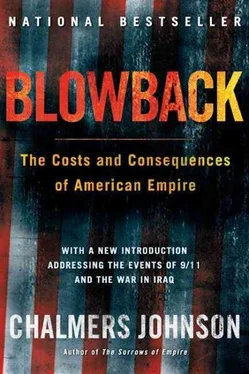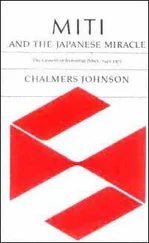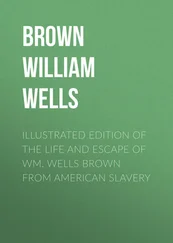Chalmers Johnson - Blowback, Second Edition - The Costs and Consequences of American Empire
Здесь есть возможность читать онлайн «Chalmers Johnson - Blowback, Second Edition - The Costs and Consequences of American Empire» весь текст электронной книги совершенно бесплатно (целиком полную версию без сокращений). В некоторых случаях можно слушать аудио, скачать через торрент в формате fb2 и присутствует краткое содержание. Год выпуска: 0101, ISBN: 0101, Издательство: Macmillan, Жанр: Старинная литература, на английском языке. Описание произведения, (предисловие) а так же отзывы посетителей доступны на портале библиотеки ЛибКат.
- Название:Blowback, Second Edition: The Costs and Consequences of American Empire
- Автор:
- Издательство:Macmillan
- Жанр:
- Год:0101
- ISBN:9780805075595
- Рейтинг книги:5 / 5. Голосов: 1
-
Избранное:Добавить в избранное
- Отзывы:
-
Ваша оценка:
- 100
- 1
- 2
- 3
- 4
- 5
Blowback, Second Edition: The Costs and Consequences of American Empire: краткое содержание, описание и аннотация
Предлагаем к чтению аннотацию, описание, краткое содержание или предисловие (зависит от того, что написал сам автор книги «Blowback, Second Edition: The Costs and Consequences of American Empire»). Если вы не нашли необходимую информацию о книге — напишите в комментариях, мы постараемся отыскать её.
Blowback, Second Edition: The Costs and Consequences of American Empire — читать онлайн бесплатно полную книгу (весь текст) целиком
Ниже представлен текст книги, разбитый по страницам. Система сохранения места последней прочитанной страницы, позволяет с удобством читать онлайн бесплатно книгу «Blowback, Second Edition: The Costs and Consequences of American Empire», без необходимости каждый раз заново искать на чём Вы остановились. Поставьте закладку, и сможете в любой момент перейти на страницу, на которой закончили чтение.
Интервал:
Закладка:
With hegemony established on military terms and the American public more or less unaware of what its government was doing, government officials, economic theorists, and members of the Wall Street–Treasury complex launched an astonishingly ambitious, even megalomaniacal attempt to make the rest of the world adopt American economic institutions and norms. One could argue that the project reflected the last great expression of eighteenth-century Enlightenment rationalism, as idealistic and utopian as the paradise of pure communism that Marx envisioned; or one could conclude that having defeated the Fascists and the Communists, the United States now sought to defeat its last remaining rivals for global dominance: the nations of East Asia that had used the conditions of the Cold War to enrich themselves. In the latter view, U.S. interests lay not in globalization but in bringing increasingly self-confident competitors to their knees.
In any event, buoyed by what the apologist for America Francis Fukuyama has called the “end of history”—the belief that with the end of the Cold War all alternatives to the American economic system had been discredited—American leaders became hubristic. Although there is no evidence that Washington hatched a conspiracy to extend the scope of its global hegemony, a sense of moral superiority on the part of some and of opportunism on the part of others more than sufficed to create a similar effect.
Their efforts came in two strategic phases. From about 1992 to 1997, the United States led an ideological campaign to open up the economies of the world to free trade and the free flow of capital across national borders. Concretely this meant attempting to curb governmental influence, particularly any supervisory role over commerce in all “free-market democracies.” Where this effort was successful (notably in South Korea), it had the effect of softening up the former developmental states, leaving them significantly more defenseless in the international marketplace.
Beginning in July 1997, the United States then brought the massive weight of unconstrained global capital to bear on them. Whether the U.S. government did this by inadvertence or design is at present impossible to say. But at least no one can claim that America’s leadership did not know about the size and strength of the hedge funds located in offshore tax havens and about the incredible profits they were making from speculative attacks on vulnerable currencies. In 1994, for example, David W. Mullins, former Harvard Business School professor and vice chairman of the Federal Reserve Board, went from being a deputy of Reserve Board chairman Alan Greenspan to a position as a director of Long-Term Capital Management (LTCM), a huge hedge fund with its headquarters in Greenwich, Connecticut, but its money safely stashed in the Cayman Islands, beyond the reach of tax authorities. In 1998, after the conditions it helped bring about had almost bankrupted the fund, the New York Federal Reserve Bank arranged a $3.65 billion cash bailout to save the company—as good an example of pure “crony capitalism” as any ever attributed to the high-growth economies of East Asia. In fact, when the bailout came to light, a number of Asian publications cynically recalled how the New York Times had editorialized only months earlier that in Asia “collusive practices were not only tolerated, they were encouraged” and that “the United States needs to reiterate the importance of full transparency by companies and financial institutions.” 11After the LTCM bailout, Martin Mayer, one of the most respected writers on the American financial system, observed that “the Fed [Federal Reserve Board] for all its talk of ‘transparency’ has made the fastest growing area of banking totally opaque, even to the supervisors themselves.” 12
In order to make it intellectually respectable for the smaller Asian economies to swallow all the money the United States, Japan, and other advanced countries were offering them, the U.S. government threw its weight behind the Asia-Pacific Economic Cooperation forum (APEC), an organization the Australians had launched at a meeting of trade ministers in Canberra in November 1989. The forum did not, however, take off until November 1993, when President Clinton decided to attend an APEC meeting in Seattle and turned it into an Asia-Pacific summit of leaders from all the major East Asian nations. The Seattle meeting also produced APEC’s first “Economic Vision Statement”: “The progressive development of a community of Asia-Pacific economies with free and open trade and investment [italics added].” Under American leadership, APEC became the leading organization promoting globalization in East Asia. At annual meetings in different Pacific Rim countries, it insistently propagandized that the Asian “tiger economies” open up to global market forces, in accordance with the most advanced (American) theorizing about capitalist economies and in order to not be left behind as mere developmental states.
The November 1994 APEC meeting in Bogor, Indonesia, committed the participants to free trade and investment in the Pacific by 2010 for developed countries and by 2020 for developing countries, such as China and Indonesia. In 1995, at Osaka, APEC members agreed to unilaterally open their economies rather than attempt to negotiate a treaty like the North American Free Trade Agreement, which would have generated too much resistance in many of the member nations. Nothing much happened at Manila in 1996—except for a visit by the leaders to the old U.S. naval base at Subic Bay, now cleaned up of its prostitutes and turned into a free-trade and development zone. At Vancouver in November 1997, with the Asian financial crisis already under way, the United States pushed for the rapid removal of tariffs and nontariff barriers to trade in fifteen different sectors of economic activity. At Kuala Lumpur in November 1998, APEC finally came unglued. The prime minister of Malaysia, Mahathir Mohamad, had only a few months earlier reimposed capital controls over his economy to insulate it from gypsy capital, for which Vice President Al Gore openly denounced him, encouraging the people of Malaysia to overthrow him. The meeting ended in rancor, with Japan taking the lead in scuttling any further market-opening schemes for the time being. Its Ministry of Foreign Affairs declared that the United States was possessed by an “evil spirit” and accused it of endangering the region’s fragile economic condition by pushing market-opening measures down the throats of countries too weak to open their borders further. 13Malaysia and the United States did not even bother to attend the 1999 APEC meeting of trade ministers in Auckland, New Zealand.
The shock that brought this edifice crashing to the ground started in the summer of 1997, when some foreign financiers discovered that they had lent huge sums to companies in East Asia with unimaginably large debts and, by Western standards, very low levels of shareholder investment. They feared that other lenders, particularly the hedge funds, would make or had already made the same discovery. They knew that if all of them started to reduce their risks, the aggregate effect would be to force local governments to de-peg their currencies from the dollar and devalue them. Since this would raise the loan burdens of even the most expertly managed companies, they too would have to rush to buy dollars before the price went out of sight, thereby helping to drive the value of any domestic currency even lower.
The countries that had followed recent American economic advice most closely were most seriously devastated. They had opened up their economies to unrestricted capital flows without understanding the need to regulate the exposure of their own banks and firms. They did not ensure that borrowers in their countries invested the money they acquired from abroad in projects that would pay adequate returns or that actually constituted collateral for the loans. The foreign economists who advised them did not stress the institutional and legal structures needed to operate in the world of American-style laissez faire. No one warned them that if they raised their interest rates in order to slow inflation, foreign money would pour into their countries, attracted by high returns, whereas if they lowered interest rates in order to prevent a recession, it would provoke an immediate flight of foreign capital. They did not know that unrestricted capital flows had put them in an impossible position. What took place in East Asia was a clash between two forms of capitalism: the American system, disciplined by the need to produce profits, and the Asian form, disciplined by the need to produce growth through export sales.
Читать дальшеИнтервал:
Закладка:
Похожие книги на «Blowback, Second Edition: The Costs and Consequences of American Empire»
Представляем Вашему вниманию похожие книги на «Blowback, Second Edition: The Costs and Consequences of American Empire» списком для выбора. Мы отобрали схожую по названию и смыслу литературу в надежде предоставить читателям больше вариантов отыскать новые, интересные, ещё непрочитанные произведения.
Обсуждение, отзывы о книге «Blowback, Second Edition: The Costs and Consequences of American Empire» и просто собственные мнения читателей. Оставьте ваши комментарии, напишите, что Вы думаете о произведении, его смысле или главных героях. Укажите что конкретно понравилось, а что нет, и почему Вы так считаете.










